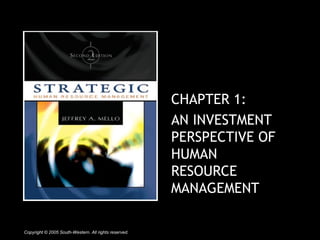The document discusses the strategic view of human resource management and treating employees as valuable assets. It states that effective organizations recognize that employees have value, similar to physical and capital assets, and that employees can provide a source of sustainable competitive advantage when appropriate policies and programs are applied. It also discusses factors that influence an organization's investment orientation toward human capital and treating people as central to the mission and strategy.





















